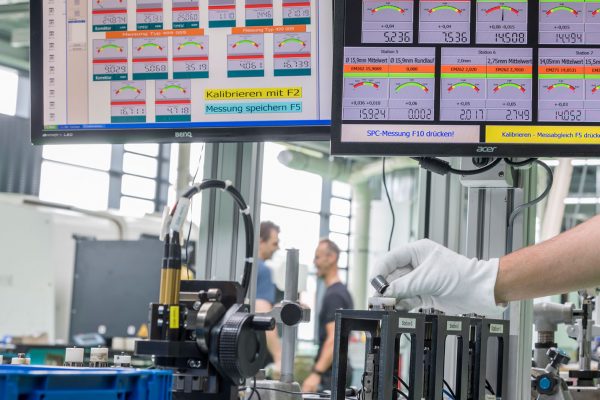Quality for every requirement
The quality consciousness of every single employee is apparent in and throughout all areas. The benchmark for the best possible quality and cost-effectiveness is always the customer’s requirements. We inspect visually, tactilely, with contact, without contact in accuracy classes from 0.01 mm at up to 150 parts/min and we inspect with high precision in the range from 0.001 mm at approx. 2–4 parts/sec (component dependent).

Piece-by-piece inspected quality
As far as available, we use standard systems for the 100% inspection of a precision component. If there is no suitable system, we develop and design the necessary custom machines.
The advantage: also here the (inspection) process is adapted specifically to the component and its requirements – 100% inspection does not permit any compromises.
In recent years we have also built numerous fully automated 100% inspection systems (custom machines) for the necessary applications. Processes that we have implemented and that we master:
- Fully automated measuring machines with camera systems that measure up to 160 parts/minute
- Tactile multipoint measuring systems, length and diameter measurements in accuracy class 0.001 mm
- Hardness/crack testing technology
- Scanning surface technologies
- Inspection of surface characteristics and imperfections

CIP – Controlling in Process
CIP – Controlling in Process we understand as the usage of integrated measuring systems that acquire measured data during the production process and in this way control and regulate the process.
Depending on the cycle time of the components, we are able to establish, in parallel with the actual machining, processes that 100% inspect every component during the non-productive time. Along with the advantage that all components are 100% inspected, we can also regulate and control the production process in good time in this way.
This 100% inspection directly in the process, however, cannot be implemented with all components, because proximity to production also brings with it heat, chips and other negative factors.






